new posts in all blogs
Viewing: Blog Posts Tagged with: top ten list, Most Recent at Top [Help]
Results 1 - 11 of 11
How to use this Page
You are viewing the most recent posts tagged with the words: top ten list in the JacketFlap blog reader. What is a tag? Think of a tag as a keyword or category label. Tags can both help you find posts on JacketFlap.com as well as provide an easy way for you to "remember" and classify posts for later recall. Try adding a tag yourself by clicking "Add a tag" below a post's header. Scroll down through the list of Recent Posts in the left column and click on a post title that sounds interesting. You can view all posts from a specific blog by clicking the Blog name in the right column, or you can click a 'More Posts from this Blog' link in any individual post.

By: Celine Aenlle-Rocha,
on 7/26/2016
Blog:
OUPblog
(
Login to Add to MyJacketFlap)
JacketFlap tags:
Books,
Music,
top ten list,
piano,
beethoven,
Bach,
mozart,
Liszt,
fortepiano,
Donna Gunn,
Discoveries from the Forepiano,
Manual for Beginning and Seasoned Performers,
period music,
Add a tag
We have all attended concerts where a performer dazzled us with technique that seemed hardly humanly possible – a phenomenon that has been a part of musical performances throughout history. In a 1783 anecdotal memory by Johann Matthias Gesner, the ability of J. S. Bach’s playing was described to “effect what not many Orpheuses, nor […]
The post Top Ten Tips to Tackling and Transforming Piano Technique appeared first on OUPblog.
This post (meme) is inspired by my recent rewatching of Lark Rise to Candleford. I would love to see what your "one" weakness is! So please share yours!
- My one weakness is staying up late and reading.
- My one weakness is rereading books instead of reading new ones. (Again and again and again and again.)
- My one weakness is drinking tea. (I have many, many "favorites" now. I am on a Zinger kick at the moment. Love Black Cherry Zinger and also Wild Berry Zinger.)
- My one weakness is having too many books checked out from the library at a time.
- My one weakness is not being able to resist a book if it's a bargain. (It would be wrong to leave it, right?!?! Say I'm right!)
- My one weakness is chips and salsa.
- My one weakness is peaches. (I do like other fruit as well. But there's something about a good, sweet, juicy peach.)
- My one weakness is watching period dramas...
- My one weakness is stuffed animals. (I have always gotten BONDED with things in stores. From a very early age, it was always DON'T TOUCH, DON'T TOUCH, DON'T TOUCH. It almost never worked. I always had to see for myself how soft and cuddly and just-right they were.)
- My one weakness--and some of you know this is VERY true--is math!
© 2016 Becky Laney of
Becky's Book Reviews
Top Ten Tuesday is a weekly meme hosted by
The Broke and The Bookish1. Regency England. I *tend* to love books set during the Regency period in England. Georgette Heyer wrote some GREAT romances set during this period. Also Anne Perry's William Monk mystery series is set at this time.
2. Victorian England. I *tend* to love books written by Victorians. (Think Anthony Trollope, Charles Dickens, Wilkie Collins, Elizabeth Gaskell, etc.) But I also tend to enjoy historical fiction set during this period.
3. World War II. If a book is set during World War II--in any country--chances are I'm going to be curious and willing to read it. That's not to say it's a guaranteed five stars! I have read hundreds of books set during this time period.
4. 1930s-1940s--England or America. Perhaps because of my interest in World War II, I do tend to read books set prior and directly after the war. 1930s fiction set in America is often focused on the Great Depression or the Dust Bowl or the like. And 1930s fiction set in England or Europe is about the political tension of the times.
5. Middle Ages. England. Think 15th and 16th centuries. Think SUNNE IN SPLENDOUR. I have read dozens of books about the War of Roses. And a handful on the Tudors (boo, hiss, Henry VII and Henry VIII).
6. Edwardian England. And World WAR I. While not "my favorite" historical period to read about, I have read some really good books set during this time period. And I am always on the look out for more!
7. Pioneer Stories. America. I love "going west" and "living out west" stories.
8. Georgian England. Some of Georgette Heyer's romances are set during this period. Also books like The Scarlet Pimpernel.
9. Scotland. I would love to see Edward Rutherfurd write a HUGE saga set in Scotland.
10. France. I'm not sure if I like historical fiction set in France so much as I enjoy reading French classics like The Three Musketeers and Les Miserables. But I've reviewed a good handful of books set in France at various historical periods, so make the list it does!
© 2016 Becky Laney of
Becky's Book Reviews
Top Ten Tuesday is a weekly meme hosted by
The Broke and The BookishTechnically, I should have posted this on TUESDAY. But better late than never! This week was a freebie week.
1. L.M. Montgomery. I want to read all the Anne books this year. Perhaps I should say reread all the Anne books this year. This past week I reviewed
Anne of Green Gables.
2. Mark Twain. In December, I read
A Connecticut Yankee in King Arthur's Court. In January, I read
Joan of Arc. I'm definitely in the mood for Twain. I'm not sure which book I'll get to next. But I want to read more, more, more!
3. C.S. Lewis. Last year, I got the chance to reread The Lion, The Witch, and the Wardrobe, Prince Caspian, and Voyage of the Dawn Treader. I'd love to finish up with the series this year. And perhaps even reread The Screwtape Letters.
4. J.R.R. Tolkien. Last year, I discovered the joy that is the Extended Editions of the Lord of the Rings. This year, I'd like to reread the books. (I also read several of his books last year. Just not LOTR).
5. Elizabeth Gaskell. I would love to read all her novels this year. But at the very, very least I want to reread North and South. It's been years since I first read Wives and Daughters. That would be a great one to get to this year!
6. Charles Todd. I "like" both mystery series. But the Bess Crawford series is my favorite. I'd love to read more from both series in 2016.
7. Susan Wittig Albert. I'd love to finish her Cottage Tales of Beatrix Potter series.
8. Anne Perry. I've just started her William Monk series. I know she has a Victorian mystery series as well.
9. Anthony Trollope. A given for me in any year since I first discovered him.
10. Jennifer A. Nielsen. I'd love to reread some!
© 2016 Becky Laney of
Becky's Book Reviews
Ketzel, The Cat Who Composed. Leslea Newman. Illustrated by Amy June Bates. 2015. Candlewick. 40 pages. [Source: Review copy]
Frankie Liked To Sing. John Seven. Illustrated by Jana Christy. 2015. Harry N. Abrams. 32 pages. [Source: Review copy]
Gingerbread for Liberty: How A German Baker Helped Win the American Revolution. Mara Rockliff. Illustrated by Vincent X. Kirsch. 2015. Houghton Mifflin Harcourt. 32 pages. [Source: Review copy]
Breakthrough: How Three People Saved "Blue Babies" and Changed Medicine Forever. Jim Murphy. 2015. Houghton Mifflin Harcourt. 144 pages. [Source: Review copy]
Enchanted Air. Margarita Engle. Illustrated by Edel Rodriguez. 2015. Simon & Schuster. 208 pages. [Source: Library]
Pioneer Girl: The Annotated Autobiography. Laura Ingalls Wilder. Edited by Pamela Smith Hill. 2014. South Dakota State Historical State Society. 400 pages. [Source: Library]
When Books Went to War: The Stories That Helped Us Win World War II. Molly Guptill Manning. 2014. Houghton Mifflin Harcourt. 288 pages. [Source: Library]
The Armstrong Girl: A Child for Sale: The Battle Against the Victorian Sex Trade. Cathy Le Feuvre. 2015. Lion. 224 pages. [Source: Review copy]
Gut: The Inside Story of Our Most Underrated Organ. Giulia Enders. Illustrated by Jill Enders. 2014/2015. Greystone Books. 288 pages. [Source: Library]
© 2016 Becky Laney of
Becky's Book Reviews
I spent all of 2015 reading and rereading Dr. Seuss. I meant to write a top ten list the last week of December. But. Life happened...dramatically...as a few of you know! So here it is a few weeks late.
10.
You're Only Old Once! Dr. Seuss. 1986. Random House. 56 pages. [Source: Library]
This one was new-to-me. I definitely loved it. This is probably the only one on the list more for adults than for children.
9.
Because A Little Bug Went Ka-Choo! (Rosetta Stone) Dr. Seuss. Illustrated by Michael Frith. 1975. Random House. 64 pages. [Source: Library]
This one was decidedly NOT new-to-me. A favorite from childhood.
8.
The King's Stilts. Dr. Seuss. 1939/1967. Random House. 56 pages. [Source: Library]
This early-Seuss was new to me. It was a DELIGHTFUL book.
7.
Green Eggs and Ham. Dr. Seuss. 1960. Random House. 62 pages. [Source: Library]
One of my favorites.
6.
The Sneetches and Other Stories. Dr. Seuss. 1961. Random House. 65 pages. [Source: Library]
I enjoyed all the stories in this collection. It has "The Sneetches" of course. But also: "The Zax," "Too Many Daves," and "What Was I Scared Of."
5.
Sleep Book. Dr. Seuss. 1962. Random House. 64 pages. [Source: Library]
Love this "bedtime" book. It makes me yawn just thinking about reading it.
4.
Horton Hatches An Egg. Dr. Seuss. 1940/1968. Random House. 64 pages. [Source: Library]
I love Horton the Elephant. I really, really do.
3.
Fox in Socks. Dr. Seuss. 1965. Random House. 72 pages. [Source: Library]
Need I say more than...
When tweetle beetles fight,
it's called
a tweetle beetle battle.
And when they
battle in a puddle,
it's a tweetle
beetle puddle battle.
AND when tweetle beetles
battle with paddles in a puddle,
they call it a tweetle
beetle puddle paddle battle.
AND...
2.
Horton Hears A Who! Dr. Seuss. 1954. Random House. 64 pages. [Source: Library]
I love the moral of this one...and it's Horton. How can it not be on my list?!
1.
The Cat In the Hat Comes Back. Dr. Seuss. 1958. Random House. 63 pages. [Source: Library]
Without a doubt my favorite. It is so quotable.
© 2016 Becky Laney of
Becky's Book Reviews
Top Ten Tuesday is a weekly meme hosted by
The Broke and The BookishRaymie Nightingale. Kate DiCamillo. Comes out in April 2016.
Echo. Pam Munoz Ryan. Recently merited a Newbery Honor.
Last Stop on Market Street. Matt de la Pena. Recently won a Newbery, and merited a Caldecott Honor AND a Coretta Scott King Illustrator Honor.
Death on the Riviera: A British Library Crime Classic by John Bude. Being republished in March, I believe, by Poisoned Pen Press.
Serpents in Eden: A British Library Crime Classic. Collection of short stories compiled by Martin Edwards.
Murder of a Lady. Anthony Wynne. Being republished in February by Poisoned Pen Press.
My Name is Not Friday by Jon Walter. Released in January.
Lizzie and the Lost Baby by Cheryl Blackford. Released in January.
Ruby Lee and Me. Shannon Hitchcock. Released in January.
Saving Wonder. Mary Knight. Releases February.
© 2016 Becky Laney of
Becky's Book Reviews
Happy Thanksgiving! Today I thought I'd share a few things that I'm very thankful to have discovered this past year. I do wish I'd done a list in 2014. If I had, "LOST" would definitely be on it and near the top of the list. And also "Call the Midwife" and "Sherlock" and coconut oil and butternut squash. But I didn't.
“I cannot find a cup of tea which is big enough or a book that is long enough.” ~ C.S. Lewis
Topping my list this year, it would have to be tea. So three items on my list are tea-related!
The Ginger tea *is* medicinal. But I do happen to love the way it tastes. I drink at least two cups of ginger tea daily. The other two teas are holiday flavors, but I want them to be year-round flavors.
The next grouping on my list would have to be fresh fruit. I "discovered" the joys of fresh fruit this past summer. My obsession started with apples, but, then progressed. Right now what I'm really, really missing is peaches. They haven't been available since October. But apples and grapes are a treat I enjoy daily.
Before I move away from food, I just want to mention how thankful I am to have discovered a gluten-free, egg-free noodle that I want to eat. It's not available at a store in my town unfortunately, but a town or two away has a Whole Food Market which carries it. So I stock up when I can. What is great about it is that it is also corn-free. I have not had success finding a corn pasta that I want to swallow. If you have a favorite gluten-free pasta, I'd love to hear it.

2015 has definitely been the year of "the walk" for me. I started walking in the spring, and am now incredibly more active than in any previous year of my life. One trick is that I rarely if ever, sit down to watch TV. I walk instead. I definitely love my Skechers flip-flops with goga mat. It may not be flip-flop weather outside these days, but, in the house these are still getting a lot of use!!!
I've "discovered" at least two great shows this past year. But topping my list of things I've watched obsessively--in marathon--is Person of Interest. I spent most of the summer watching the first four seasons of the show. I adore this one!!!
The second show that I "discovered" this year is the television show When Calls The Heart. Now, I hated, absolutely hated, the movie. But the tv show? Well, that's a different story. I still haven't caught all of season two. But season one was great. Note: this is not a good show to walk to. Anytime Mountie Jack is on screen, I find myself stopping and just standing and watching. So, I often watched When Calls the Heart while enjoying a cup of tea!
Another new-to-me discovery was the EXTENDED editions of Lord of the Rings. While I had seen the theatre versions a good many times, I'd not watched the extended editions yet. And I love them. I love, love, love them. My summer was very Tolkien-oriented.
What are some of your favorite discoveries this year??? Do you have a favorite tea?
© 2015 Becky Laney of
Becky's Book Reviews
Happy Thanksgiving! I thought I would share the top ten library books I'm thankful to have read this past year. If you love the library, you might want to create a top ten list of your own! I'd love to read your list if you do make one!
1.
The Night Gardener. Jonathan Auxier. 2014. Abrams. 350 pages. [Source: Library]
I love and adore Jonathan Auxier's The Night Gardener. Love and adore is probably even an understatement. I read this one twice this year. I have a review here at
Becky's Book Reviews and a review at
Operation Actually Read Bible. Here's how this one begins:
The calendar said early March, but the smell in the air said late October. A crisp sun shone over Cellar Hollow, melting the final bits of ice from the bare trees. Steam rose from the soil like a phantom, carrying with it a whisper of autumn smoke that had been lying dormant in the frosty underground. Squinting through the trees, you could just make out the winding path that ran from the village all the way to the woods in the south. People seldom traveled in that direction, but on this March-morning-that-felt-like-October, a horse and cart rattled down the road. It was a fish cart with a broken back wheel and no fish. Riding atop the bench were two children, a girl and a boy, both with striking red hair. The girl was named Molly, and the boy, her brother, was Kip. And they were riding to their deaths. This, at least, was what Molly had been told by no fewer than a dozen people as they traveled from farm to farm in search of the Windsor estate.
2.
Goodnight, Mr. Tom. Michelle Magorian. 1981. HarperCollins. 320 pages. [Source: Library]
I checked out the book and the movie from the library. Both are highly recommended!!!
3.
Unbroken. Laura Hillenbrand. 2010. Random House. 473 pages. [Source: Library]
This memoir is so intense and compelling!!!
4.
Bridge to Haven. Francine Rivers. 2014. Tyndale House. 468 pages. [Source: Library]
Historical fiction set in the 1950s. Would love to see this as a movie!!!
5.
The Port Chicago 50: Disaster, Mutiny, and the Fight for Civil Rights. Steve Sheinkin. 2014. Roaring Brook. 208 pages. [Source: Library]
Love this nonfiction title!
6.
Poem Depot: Aisles of Smiles. Douglas Florian. 2014. Penguin. 160 pages. [Source: Library]
Without a doubt my favorite poetry book of the year!!!
7.
Frozen in Time. Mitchell Zuckoff. 2013. Harper. 391 pages. [Source: Library]
Yes, it's more nonfiction! And, yes, it's set during World War II.
8.
The Boy on the Wooden Box by Leon Leyson. 2013. Simon & Schuster. 240 pages. [Source: Library]
More World War II. But it's so good. A Holocaust book for the audience of Number the Stars perhaps.
9.
The Midnight Library. Kazuno Kohara. 2014. Roaring Brook. 32 pages. [Source: Library]
There is something oh-so-magical about this picture book. It just captured my heart.
10.
A Snicker of Magic. Natalie Lloyd. 2014. Scholastic. 320 pages. [Source: Library]
It wasn't easy choosing the final book. Hence why there will be honorable mentions!
Honorable Mentions:
Bo at Ballard Creek. Kirkpatrick Hill. Illustrated by LeUyen Pham. 2013. Henry Holt. 288 pages. [Source: Library]
Free to Fall. Lauren Miller. 2014. HarperCollins. 480 pages. [Source: Library]
Kiss of Deception. (The Remnant Chronicles #1) Mary E. Pearson. 2014. Henry Holt. 489 pages. [Source: Library]
Absolutely Almost. Lisa Graff. 2014. Penguin. 304 pages [Source: Library]
© 2014 Becky Laney of
Becky's Book Reviews
In This Show:
Pokemon, Popular Culture and Discourse Analysis
Coming Up in Next Week’s Show:
Podcamp New York!
Let me know where you are:
Click on ‘Join the CLIP Frappr Map’ in the menu bar.
Post a comment:
Click the comment button below or leave a voice mail by clicking ‘leave me a message’ in the menu bar or by calling [...]

By: Vivian,
on 1/30/2007
Blog:
Critical Literacy in Practice - CLIP Podcast
(
Login to Add to MyJacketFlap)
JacketFlap tags:
Podcast,
Consumerism,
Community,
Family,
Gender,
Classroom Practice,
Social Construction,
Mark Blevis,
media,
Language Use,
McDonalds Happy Meal,
power,
top ten list,
Add a tag
On Today’s Show:
Reflections on listener feedback
Mark Blevis includes CLIP in his top 10 Most Underrated Podcasts List!
CLIP is nominated for the Podcast Peer Awards in the Education category.
Thanks To:
Mark Blevis and Andrea Ross of Just One More Book, Charles Cadenhead of Mostly News and Desperate Husbands, Dave and Heather Delaney of Two Boobs and [...]



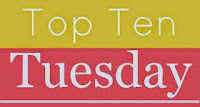






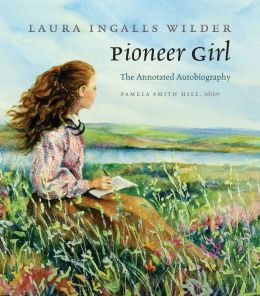

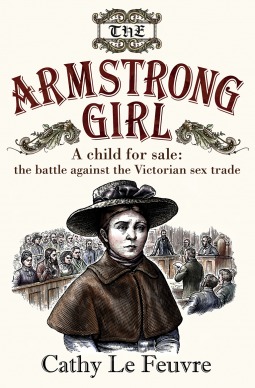




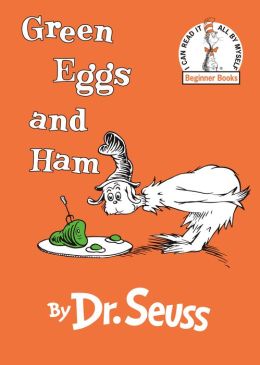


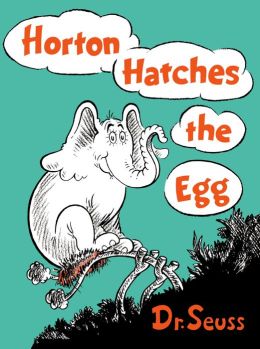

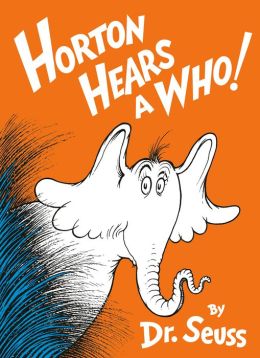



















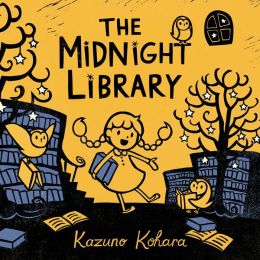
Hi Professor Vasquez-
Thanks for explaining Pokemon to me, after all the publicity and excitement, I still did not know what Pokemon really was.
The catch phrase, “Gotta catch ‘em all!” is actually quite brilliant in the way of marketing for the company. The discussion with the children in which you refer to changing the verb is a bit scary to me. It is powerful how they immediately want to catch all the cards, but even more alarming is, “Gotta eat ‘em all!” Yikes! Exactly the wrong message to send to kids who watch a lot of cartoons.
Catch phrases are very powerful tools that stick with us for a long time, songs do as well. I can still remember, “EA sports, it’s in the game,” from an old Nintendo game I would play with my brother, or the My Little Pony song. These would stick in my brain at the toy store, clothing store and grocery store, and could have changed the way I was a consumer. Pokemon has done a great job creating little consumers ready to buy a hot product.
Color and gender play such an important role here in young students, and these constructed roles stick for years to come. I still have male friends that refuse to wear pink and purple, insistent upon them being girl colors. Babies are still sent home in pink and blue blankets from the hospital. Color is such an archetype of gender, and it is important to point this out.
Lara
“Gotta catch ‘em all!” I was recently in another teacher’s classroom at my school and noticed how she had cut out various magazine ads and had them plastered on her wall. Each ad was marked up highlighting the company logo, slogan, celebrity spokesperson, etc… I mentally went through some of the subliminal phrases that have stuck in my head from tv commericals such as “I’m lovin’ it”, “Just do it”, “Zoom zoom zoom”, “Hello Moto”, etc… The power of marketing and the use of subliminal catch phrases truly is amazing. It’s something that we are all constantly being bombarded with all around us. Your podcast really made me think about if my students are aware of this form and the power of this text. The power of marketing them to like a certain brand of clothes, want to eat certain kinds of foods, or like certain songs. This really is a such an important awareness.
This really brought back memories of the many trades and frustration I had growing up collecting football, basketball, and baseball cards as a kid. I still have boxes of cards sitting in my closet and I cherish the memories and lessons I learned trying to determine how much I valued certain cards.
-Will
Vivian,
The redesign experiment was brilliant! Thanks for sharing this great story.
I have the bad habit of quickly brushing aside any focus on heavily marketed, group-think products and ideas when my daughters bring them up (which isn’t often — maybe because of my forceful and predictable response!). I love the idea of keeping a positive, open attitude yourself while using the situation to invite the youngsters to discover a way to think differently about the products and the marketing behind them.
Oh ya. Colours sounds amazing. Where can I catch one??
I’m thrilled to have CLIP back (and to successfully download 36&37!).
Andrea
I found the discussion of gender with the Pokemon characters to be very interesting. To begin with, it is almost disturbing how the creators made the characters non-gender, as an attempt to make them more versatile to consumers. However, in listening to the children, they continued to define different Pokemon characters as either male or female. It was a slight reassurance that the children used primarily physical characteristics such as colors of Pokemons to determine whether they were boy or girl.
I particularly enjoyed the portion of the podcast that discussed the redesign of Pokemon clothing. Specifically through the creation of one girl’s character “Colors” she was able to see outside of the original Pokemons to create a female oriented all powerful character. This enabled her to envision something beyond the commercial product. She was able to move away from the stereotypes the children created of gender from the original product to design her own. This demonstrated how the redesign portion of deconstruction is crucial for students to see themselves and their ideas among those that are being deconstructed. I very much enjoyed this podcast!
This Pokemon experience has sent me to a blast in the plast. I am a father of a son who is now fourteen years old. It seems like I have gone through this Pokemon experience with him.
When the movies came in the summer or the holidays, I was right there cheering on these so called special animals with unique powers. When the cards hit the stores, who was buying them for him? And the cards just happen to be in the right spot, at the check out line in the stores. Not at my eye level, but at a childs eye level, how perfect for them to ask, daddy can I get some Pokemon cards? He eventually grew out of the pokemon phase. But just think of those years from about four to ten. The marketing that the company puts in to attacking the buying power of children. This is a billion dollar market, and parents will be parent. Why? so, there child can talk the same lingo as the other children. No one wants to be left out. It’s sad to see that marketing professionals still sterotype certain colors for boys and girls. I am so glad to see that this young girl broke the paradigm of the marketers, to create something original. Hopefully, as educators we will be able to open more childrens thoughts of thinking out the box. Like I stated early in this comment, this has taken me back and examined my role as a father. I very much enjoyed this podcast.
Why is it that collectibles are so addicting to us at any age? When I was a kid it was garbage patch kids. What is it in human nature that drives us to have more and more items of a collection? Collecting is even a hobby, for adults and children. Stamp collecting, cards, coins, different animal sculptures, figurines, you name it, we’ll collect it. Even if we don’t really want it. Is it the hope that some day it will be incredibly valuable? It just follows that the golden crown for any toy or line of toys is for it to become a collectible. That way people will continue to buy for no other reason than they have some already and they want to have the complete set. This is something that goes on throughout our lives. At any given age their are items to collect. I think it’s important for children to examine this weird phenomenon and understand how they are being marketed to. It’s is interesting how in this conversation and re-design activity, you broached the subject with the students and in a way pulled back the curtain on the Pokemon Collectible marketing scheme. Will the children still want them? Probably, but at least they will be aware of the strategies sellers use to increase the volume of their sales through the creation of fads and trends.
Erin
Hi Vivian,
I listened to Pokemon and thanks for explaining what it was. First, I remember when Pokemon first came out. I did not like the cartoon, I thought that the characters looked to scary. I felt that the days of friendly looking cartoons had come and gone. The issue with gender still hold true. I remember being in high school that the guys wore consistently grey, black and jean-colored clothes. I was shocked when I went to school in Philly and saw guys wearing colors, like Pink, light green, and peach. I had pre-conceptions, but they soon changed. However, in class when we are reading materials, and I pass out the markers, it is the boys that often ask for the pink highlighters!
I remember when Pokemon first came out and it was so a big hit with the kids. I actually thought the Pokemon characters looked very scary and creepy. However, my younger cousin was very much into Pokemon from about the age of five to eleven. It was imperative for him to collect those Pokemon cards and have many of the other action figures. His parents invested a great deal of money into the Pokemon action figures as well as the collectible trading cards. It seemed whenever we went to the store there were always more collectible cards. No matter how many cards my cousin had, he would seperate what he believed to be the male characters from the female charcters. So I find it interesting that even though the characters do not have “genders”, children give them genders based on what they have learned in society about male and females. So even though the characters purposely do not have genders, children can still imply what they believe is true. Makes you wonder why do animators create some characters this way? Why not just give the characters a gender?
Ah, Pokemon, the most popular topic of conversation in my class. Well at least until they’ve watched the new “That’s So Raven” episode. I listened to your podcast and while I agree about the stereotypes that are reinforced, I have to say that my class is pretty good at ignoring gender and just appreciating these characters for their powers. While I don’t agree with the amount of time, devotion and money that my students spend on Pokemon, I’ve found that by learning more about it myself has helped my tap into their background knowledge; Pokemon has helped me improve my student’s comprehension. Most of the time, I ask questions and my students answer them allowing me to teach the comprehension skill I’m trying to teach, i.e. cause and effect, comparing and contrasting, etc. After they understand the concepts, it’s easier to get them to apply them regularly and consistently to real world situations. I do have a problem with the commercialization of Pokemon characters but I have to be honest and admit that at least it’s one trend that has had some lasting power. At least now I don’t have to spend so much time trying to find some new fad to follow so that I can better relate to my students and that helps me plan my lessons more effectively.
Anjuli
Pokeman!!! Gees, I almost forgot about them. Thanks for the history of Pokeman. I actually remember when Pokeman came out and the big hit they became- from my experience they represented a “status symbol” amongst kids, or so it seemed. The more Pokeman cards you owned, the cooler you were. I find the gender issue interesting as I never noticed that their gender did not exist because the children automatically labeled each character. I am however, still somewhat perplexed as to why this gender issue raises such a big deal. Why is it not okay for a specific character to be a boy and another a girl- as long as we remove the stereotypes by expanding the roles each gender plays. This is the world in which we live in- boys and girls. I find in my classroom that students are becoming more comfortable with the sensitivity to gender. I must say that I enjoyed the re-design segment. Great job. Thanks for sharing, I enjoyed the podcast.
I appreciate your introducing me to the Pokemon world. I am somewhat out of touch with today’s entertainment characters.
I find the non gender characters somewhat unique,since it creates versatility to the consumers and thus leaving it up to them to define ( boy or girl).
I consider this method to be a phenomenal marketing strategy, which would eliminate major decision making when making a purchase.
Since marketing of this product is directed towards the youth, I am positive that this market must be extremely lucrative.
Parents should take the time to explain to their children the art of marketing, since this has a major impact on their pockets.
Color and gender are they as important to children as they are to adults? and where did the theory come from that certain colors belong to boys and others to girls.
I believe that as products of society, we set the standards of what is masculine and what is feminine.
Collectibles are addicting to us at any age? As a kid, I collected baseball cards and did a lot of trading transactions, as I assume the same is being done here, but with $$ being involved..
I have not had the opportunity to experiment with Pokemon, but look forward to having some discussion on this with my students.
One thing that I love about this Pokemon story is how well it exhibits the ways that everyday texts can be used in a classroom. It is great to see how something that interested the students transformed into a meaningful learning experience. Initially, I was impressed with the financial knowledge of the student who was analyzing his new Pokemon cards. I think this shows how an everyday text could be used in teaching academic concepts, likely teaching them in a way that could be more meaningful to students.
Additionally, it was great hearing how the Pokemon were redesigned by students, allowing them to begin to realize how they constructed their view of the Pokemon… there are so many opportunities for critical literacy in what we find around us in the classroom every day. Thanks for sharing this great example of that!
Pokemon make me think about our perceptions of color and how our society often uses it to demarcate the feminine from the masculine. As we all know, historically, blue was typically a boy’s color while pink was identified as a girl’s color. It was just a few decades ago that there was an interesting switch in the colors both genders wear. Now, it is amazing at the comfort with which boys and men year pink and lavendar.
In addition, it was also interesting to see how marketing plays such a significant role in making kids play a key role in American consumerism, especailly with the catch phrade “gotta catch them all.”
This is such a great way to use what children are already interested in to promote growth and learning. Instead of fighting against the realities of childhood in the 21st Century, we should be working within the existing context. “If you can’t beat ‘em, join ‘em” is a good way to think about it. No matter how much we try to censor what our children are exposed to, we will never completely succeed. It would be better to try and make the best of the situation and turn it into something positive. I like the idea of deconstructing or redesigning the shows and products that children are interested in. If we are able to show children that the world around us is socially constructed and that they can effect this construction, then they are more likely to be independent thinkers and help our society move forward.
Leslie Jones
Washington DC
I think the number of very powerful and thoughtful responses to this episode attests to the draw we have towards everyday texts such as Pokemon and our understanding or wondering about how such texts intersect with our children’s lives in a variety of ways.
I’d love to hear about what sorts of everyday texts you have taken up in your setting with students or your own children and how you’ve worked and played with those texts.
Thanks Everyone
vivian
The title of this particular Pokemon podcast caught my attention, as i am very aware of its popularity and thought that I could relate to it easily. For starters, I was very impressed by the re-creation project, where the kids designed thier own Pokemon character. What a great idea to spark a critical conversation!
The issue of gender was intersting, as the fourth graders I work with are very much under the impression that males and females are very different in thier ablties. I would be interested in what they would create if I had done the same project with my students. I have students who believe that boys are tougher (the boys, of course) and some who think that girls are smarter (of course, the girls)…and that THAT means more power. And the boys come to realize that they would rather have the “smarter” quality…although they would never admit it outright.
That project gives me ideas about future writing and discussion prompts. I have one student who sticks out in my mind, and I can’t help but think about him as I write this comment. He makes such a big deal about boys and pink and how they shouldn’t wear it or even use a pink marker. If I was to do this project, he would be very critical of any boy or girl creating a charcter who didn’t scream male attributes. It is unfortunate, yet it may be an opportunity to help him to understand how inappropriate it is to make some of the cheauvanistic comments that he makes. He doesn’t seem to want to believe me, so maybe he would listen to his peers if they tried to ’set him straight’ in a controlled conversation.
I may have veered from the main topic of the podcast, but I am speaking from my initial reaction, which is to brainstorm some ideas how I can deal with my own classroom’s issues with gender.